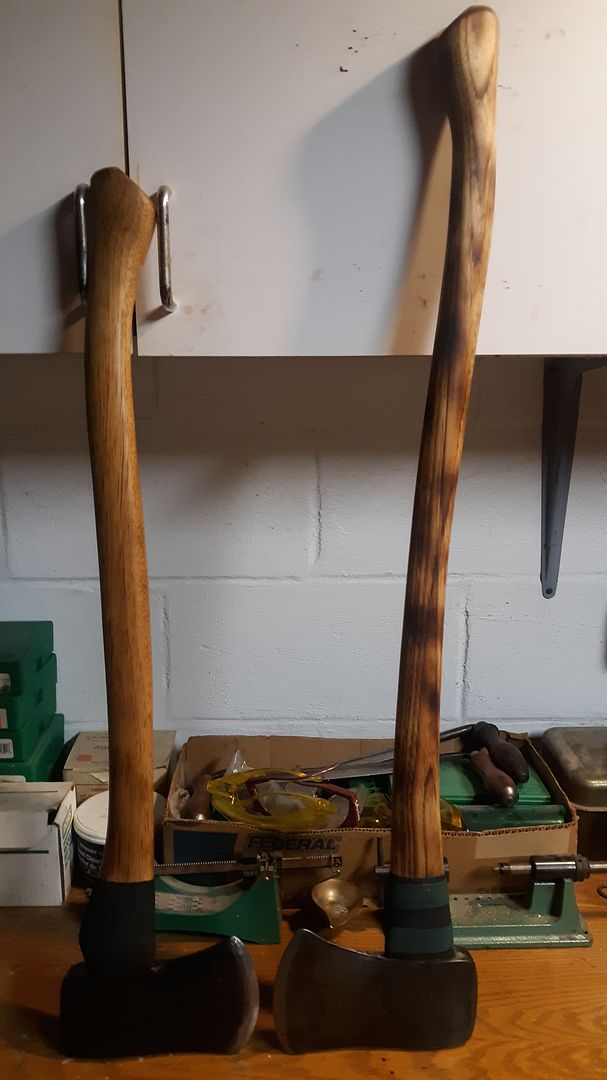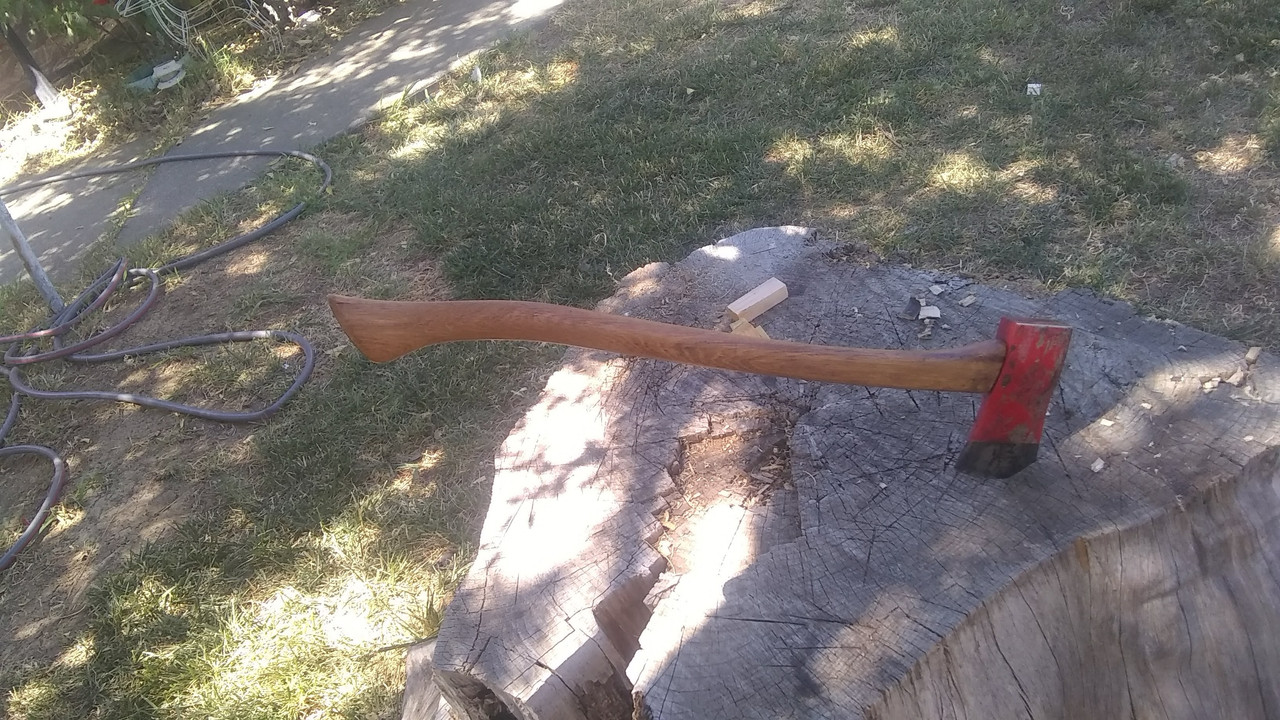- Joined
- Jan 15, 2007
- Messages
- 554
I did a search and did not see any threads dedicated to this topic--so here goes. This is not a "if you are going off into the wilderness" or "if you could only have one axe" thread. If you want to respond in that way -- that is perfectly fine--but it is not the focus of the thread. I think most of us have specialized axes for specific chores, but sometimes we have an axe that we grab in case we need an axe--for whatever the need may be that day. It could be the axe you carry or put in the truck when you are checking fence lines and fence rows. The one you grab for some wood cutting chores--limbing to splitting. Maybe its the one you take camping just in case.
I have two such axes--with unmarked vintage heads. Both show forging marks and have high quality bits that challenge a good file. They both take a very good edge. One was my grandpa's farm axe. They are a roughly 3.5# Connecticut pattern with moderately high center cheeks. I have them on a 32" stouter handle and a 36" slimmer handle respectively. I'm glad they are not brand-marked as they have less commercial value and more value to me as a working tool. The Connecticut pattern with a higher center is a good compromise for chopping and splitting. I prefer a shorter fuller handle (better control with a full hand grip) for most chopping and a longer slimmer handle (more shock absorption and less width to catch on the wood) for most splitting.
What do you like?
I have two such axes--with unmarked vintage heads. Both show forging marks and have high quality bits that challenge a good file. They both take a very good edge. One was my grandpa's farm axe. They are a roughly 3.5# Connecticut pattern with moderately high center cheeks. I have them on a 32" stouter handle and a 36" slimmer handle respectively. I'm glad they are not brand-marked as they have less commercial value and more value to me as a working tool. The Connecticut pattern with a higher center is a good compromise for chopping and splitting. I prefer a shorter fuller handle (better control with a full hand grip) for most chopping and a longer slimmer handle (more shock absorption and less width to catch on the wood) for most splitting.
What do you like?


